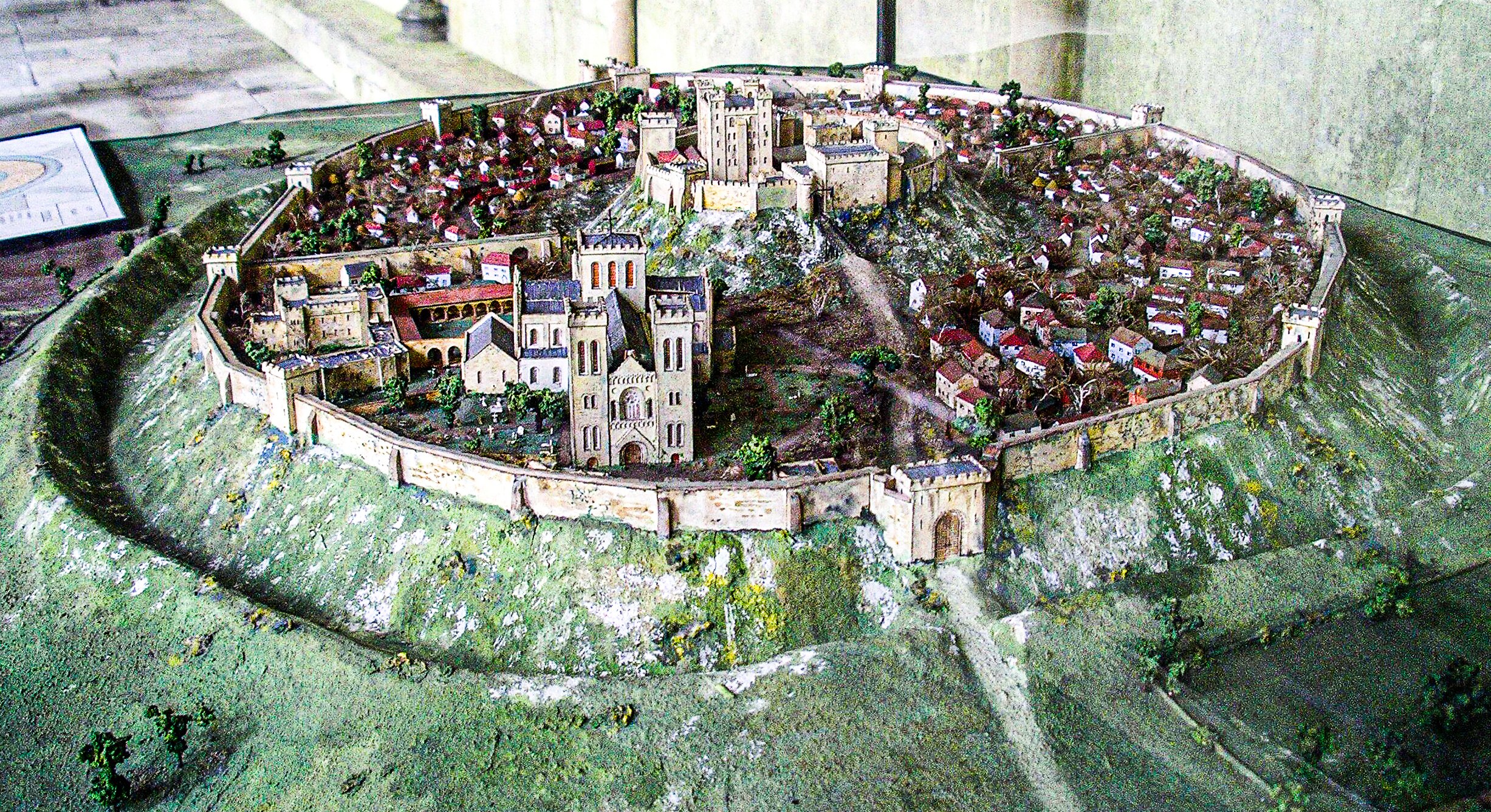Old Sarum
England is awash with tid bits of history, the signs of human habitation hidden under the very ground we wander across. Some places how ever leave their mark for all to see and usually these places are high.
Old Sarum was a place I had noted on another trip to see Stone Henge and Avebury a few years ago, but with time in short supply that day and the need to pre book saw this put to the side for another day. With a little road trip down south for another event, we opted to pop in for a stop on route.
With such a high vantage point it would be hard to miss the almost fairy tail crumbling ruins, deep ditches and banks of earth, in the earliest construction of the hill fort, it must of looked impressive as the hill is made up mainly of chalk, imagine a the white banks standing out against the green fields and forest, talk about status symbol.
Old Sarum has seen human habitation for some 5000 years, which is immense to think that at the earliest stages of man (prehistoric), this site was always deemed an important feature of the landscape. If you have ever been this way you will notice that it has its fair share of flatness and Old Sarum sticks out above the surrounding landscape.
Around 400bc, early Britons built the first of many fortification upon it, consisting of enormous ditches and banks that surrounds its roughly oval shape, being close to other notable hillforts and also two of the largest stones circles on the UK, Sarum was an important settlement, looking over and controlling an import intersection of trade routes.
Before the Romans entered the land, the fort was home to a group of celts who called the fort Caer Saflog or citadel of the service tree which grow locally and is thought to mean whitebeam.
With the arrival of the Romans, as with most hillforts Old Sarum was taken and became what is thought to be a Roman fort with a settlement outside the defended walls with many roads branching off to various important centers. This was common in the Roman period for the living and working areas to be on the outside of Roman forts, leaving the inside largely to the military, there is little known about this period of its life though. It is thought that the need for a hill fort reduced and the site was slowly disused by the military, during the end of the Roman and start of the Saxon period, it is known that a mint was built on the site with some evidence of a small Anglo-Saxon settlement also being found outside the ramparts. The Saxons in around AD55 threw out the Britons who had taken refuge in the fort after the Romans has left, this site became an important part of Saxon Wessex hence the mint.
With the arrival of the Normans shortly after their victory of 1066, the site became once more an important site of activity and power, the Normans quickly built a motte and bailey castle, the castle now sported two sets of defenses, the inner castle and the large outer ramparts and ditch, the large scale of the outer defense meant that it could house a large number of troop, the Normans keenly spotted that as with the Iron age period, Sarum sat and at a critical intersection of trade routes.
During this period, the inner section became home to a number of buildings, mainly built of timber, with the only stone sections being the outer keep/tower, a cathedral was also built at this time and its importance as a center of power was cemented, the Sheriffs of Wiltshire set up residence and the Cathedral became home to a body of clerks and scholars, the inclusion of a Scriptorium showed how important Old Sarum was to the Norman world.
For a short period, the site was left in charge of Bishop Roger, whilst king John I was away doing kingly type business abroad, after his death around 1139, Sarum became less popular as the New king King John II lavished money on his fancy new hunting lodge however by around the 1220s with the Royals failing to maintain its upkeep and the church and crown no longer getting on (think neighbor's from hell), the clergy moved into Salisbury and built and even grander Cathedral and city.
Habitation of the site hung on for a further few years, but by 1540 the castle and the dwellings outside the ramparts were no more, the castles mighty stone walls taken apart and used for other building projects.



Myth
It is said that Salisbury (new Sarum) was founded on the aim of an archer who stood atop Old Sarum and let an arrow fly. One theory as to how an arrow could of reached that far, is that the archer struck a deer which then ran off and died at the site of New Sarum.
Old Sarum and New Sarum has been identified and laying directly in line with the famous stone henge, leading to the theory that it sits atop a ley line.
The first cathedral had to be rebuilt after only a few weeks of being constructed, after having been struck by lightening.
Overall
The site is currently run by English Heritage, admission is £5.90 per adult and £3.50 per child, no toilets on site currently as these are being revamped.
there is a small shop that serves hot drinks from a machine, it is windy up there most of the time, but offers stunning views of the area, so take a blanket and wrap up warm on all but the suniest of days.








